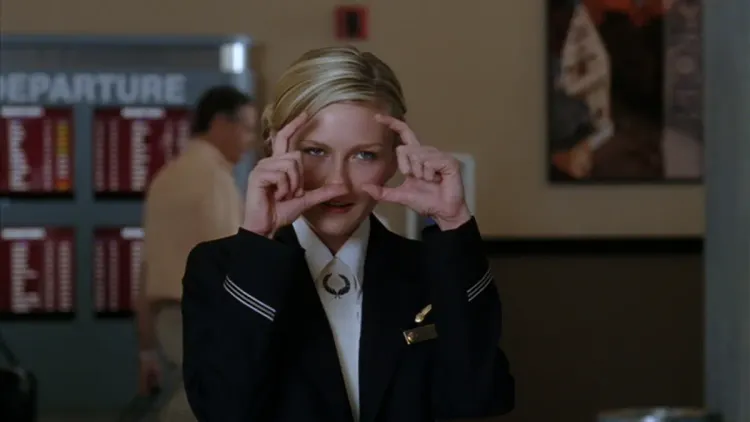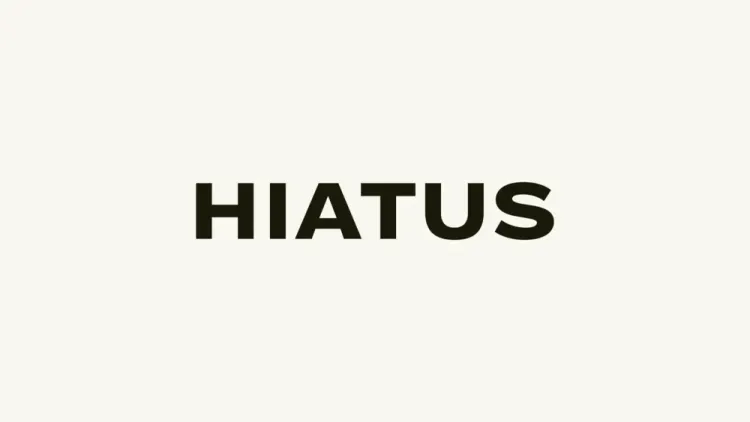Episodes: The mirror structure


So as I said a few days ago (before the plane's descent so rudely interrupted me), sitting down with some sort of structure in mind when you're writing a thinkpiece/essay/what-have-you can be the difference between a great piece and one that just repeats itself over and over.
Now, for most pieces, which are making one argument, the best structure is usually some variation on the classic "argumentative essay" structure you probably learned in school. You know, like:
Introduction
Argument
Point one of evidence
Point two of evidence
Point three of evidence
Briefly restate argument (and how evidence plays into it)
Conclusion
This is time-tested, time-honored, and will never serve you wrong. (It's such a good structure that "Satisfied," the best song in Hamilton, is written in it. And would Lin-Manuel Miranda steer you wrong?)
But once you get past something more complicated than simply stating one basic argument, things get a little hairier. What if, for instance, you want to compare and contrast two works, or if you want to cut between essentially A- and B-stories, or if you want to talk about two very different themes?
For that, there are a lot of answers and most of them end up with your editor helping you restructure your piece, either before writing at the outline stage, or once the first draft is turned in. But you still need a place to start, a sort of underlying ABABAABB structure that will help you organize your initial thoughts.
For that, I often turn to something I call the mirror structure. I developed this on my own, but I don't think I invented it. It's the way a lot of more complicated pieces are written, because it sort of intuitively suggests itself. But once I wrote it down, it really became helpful for me.
(Note: There hasn't been a piece where I've used this that didn't require some sort of restructuring at some point. But that restructuring almost always means moving the pieces around, which is easier than tearing the whole thing apart. The advantage of the mirror structure is that it makes it very, very easy, almost immediately, to identify what the pieces are. Once you know that, then moving them around becomes a less daunting proposition.)
So how does it work?
First, identify the two ideas or themes you're trying to interweave, then figure out which of the two of them is going to be the exact center of your piece. The typical version of this will look something like:
A
B
A
B
A
For a piece I'm working on, my starting structure is:
A
B
B
A
B
A
B
A
B
B
A
It tilts a little more toward B, but A is at the center. The two are in tension, but also have a nice balance.
Note that you can literally just do this with A's and B's (and C's, if you're feeling crazy). This is not about figuring out what you are trying to say. It's about trying to establish balance, rhythm, and flow.
This step should be pretty easy, because you don't have to think. You just have to consider flow. You could do something that nestles a bunch of B's inside of two A's (I see this one a lot). You could have a whole bunch of A's with one B at the center (this is hard to do!). Or whatever. The sky's the limit. The key thing is that you figure out what everything in your essay is moving toward, whether it's a spiral down to the center and then a climb back up (the way I tend to write), or a rising action/falling action kind of thing. The biggest key here is that you are not building toward your conclusion. You are building toward your midpoint. That relieves a little bit of the stress on your ending.
The next part is where the hard work begins. You need to go from your simple A's and B's to figuring out what each of them represents. In a longer piece like this, it's very likely that each section will be its own mini-essay, one that has its own rise and fall, so you need to jot down a brief idea of what your argument will be for each section.
This might be easier to see with something I've published, so let's look at this You're the Worst essay from last year. On the AB level, it was:
Marriage
YTW
YTW
Marriage
YTW
YTW
Marriage
You'll notice if you read that piece that the sections are a little less clear-cut than all that. Most of the You're the Worst sections talk about my marriage in some way, and vice versa. But what I really wanted to know was where the weight of each section would land, and that was what I had settled on.
Figuring out the heart of each section was a little trickier. But this is where I landed. (I have to recreate my original notes, because I stupidly didn't save them.)
Origin story (the turning point in our relationship)
Introduction to You're the Worst and its treatment of depression (liberal linking)
The problems with including depression in comedy, and the fear that YTW is "no longer funny" (comedy requires punchlines, depression doesn't have resolution, etc.)
The nuclear option (how YTW depicts the savage anger of depression I recognize in my own life)
Why not just leave? (obvious)
The ultimate danger of depression on TV (TV begs for release, and depression doesn't offer it; how this might affect YTW going forward)
The lessons (stuff I've learned)
The notes will gradually get more and more extensive as you build sections out. But the nice thing about this is that once you have your rhythm figured out, certain pieces of certain arguments will naturally suggest themselves for certain sections.
Again, this probably won't be your final structure. (The YTW essay was unusual in that what I started with ended up being roughly what I ended with.) At the outline stage, pull in your editor (if you have one) to figure out if you're being too esoteric.
What this is useful as, though, is an organizational structure, a way to figure out what goes where, which often isn't obvious. Maybe this will all sound really strange. Maybe it will sound over-obvious. But I hope you find it helpful. I know I have. Happy essay structuring!
--
Episodes is published at least three times per week, and more if I feel like it. It is mostly about television, except when it's not. Suggest topics for future installments via email or on Twitter. Read more of my work at Vox Dot Com.





Member discussion